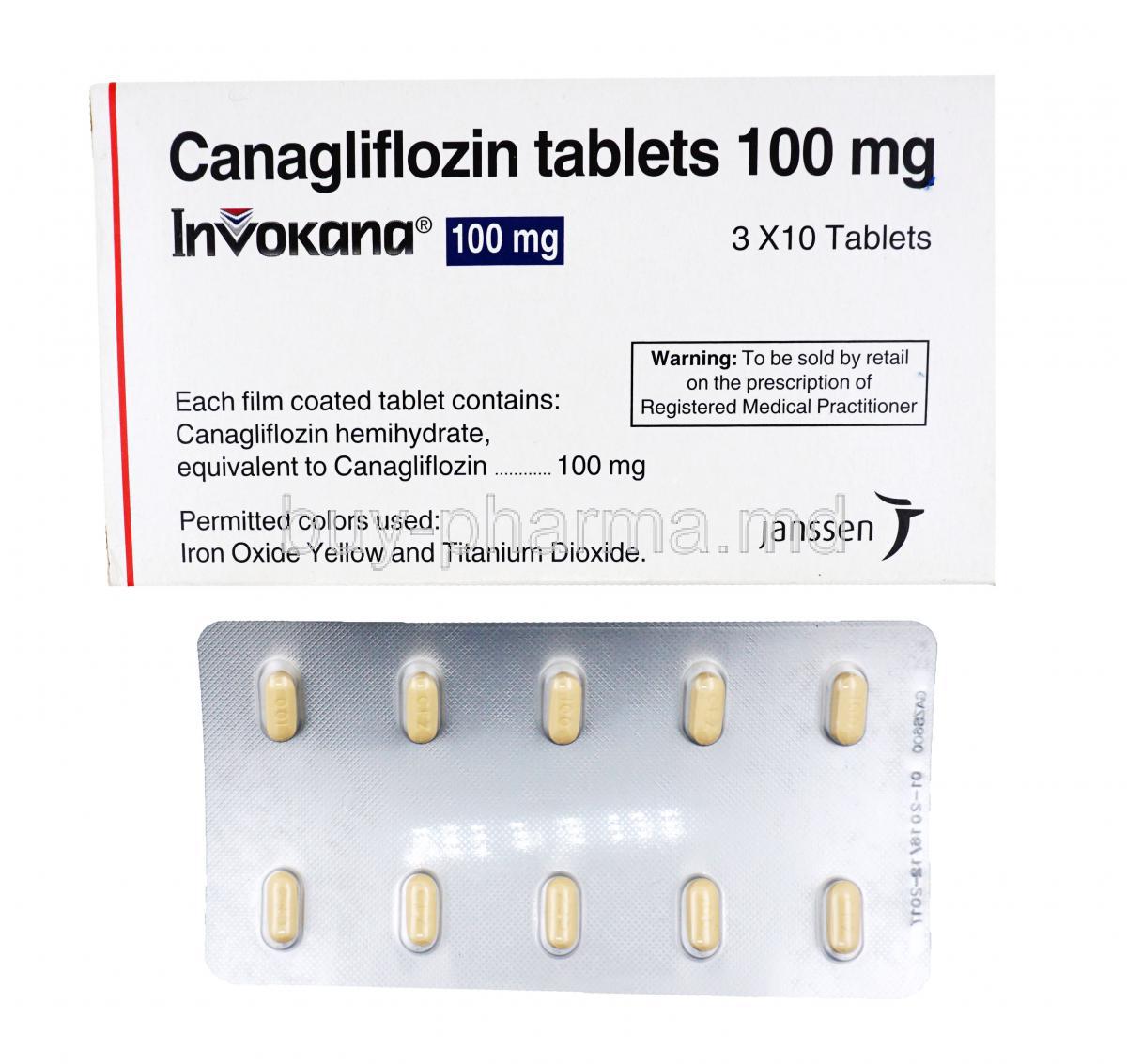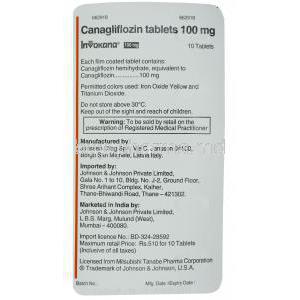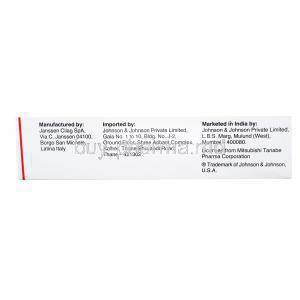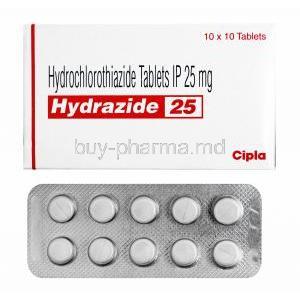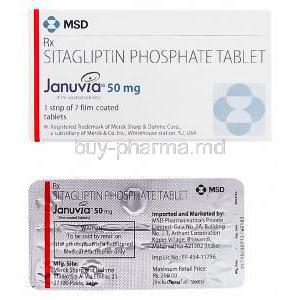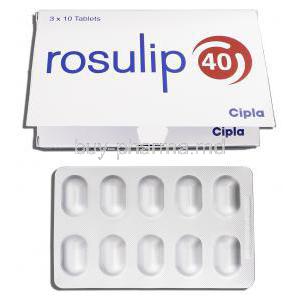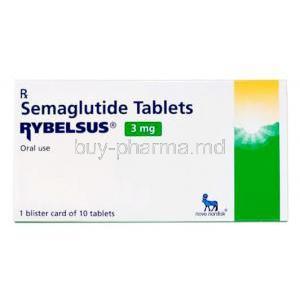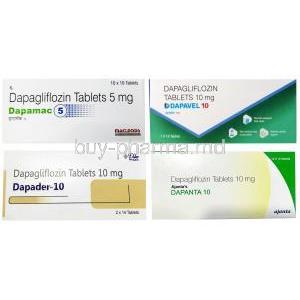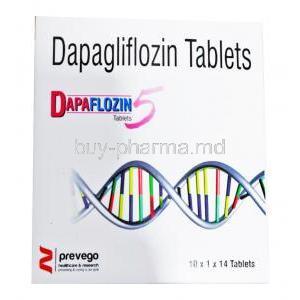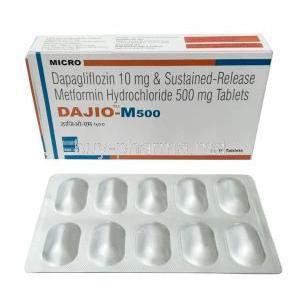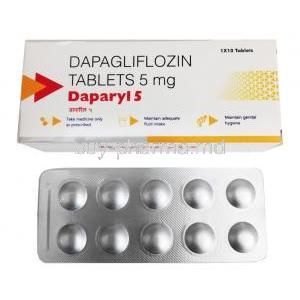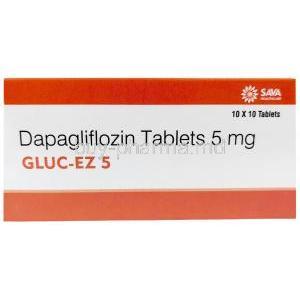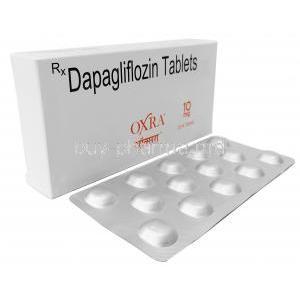Invokana, Canagliflozin
- Introduction
- Composition and Formulation
- Mechanism of Action
- Uses of Canagliflozin
- Off-Label Uses
- Dosage and Administration
- Side Effects of Canagliflozin
- Canagliflozin Drug Class
- Important Precautions
- Interactions with Other Medications
- Contraindications
- Administration Considerations
- Overdose and Management
- Storage and Handling Precautions
Introduction
Canagliflozin, also known by its brand name Invokana, is a standout medication in treating type 2 diabetes. Created through efforts in the pharmaceutical sciences, this drug helps the kidneys excrete glucose, leading to improved blood sugar levels. The development of Canagliflozin originated from research focused on utilizing the kidneys' natural glucose-regulating mechanisms. Its journey from inception to use reflects a thorough process of careful trials and scientific evaluation.
Upon receiving approval from the U.S. Food and Drug Administration (FDA) in 2013, Canagliflozin marked a milestone in diabetes care, highlighting its impact on blood sugar levels and its cardiovascular and renal benefits. Today, Invokana has established itself in markets worldwide and plays a key role in the treatment plans of numerous individuals who manage diabetes.
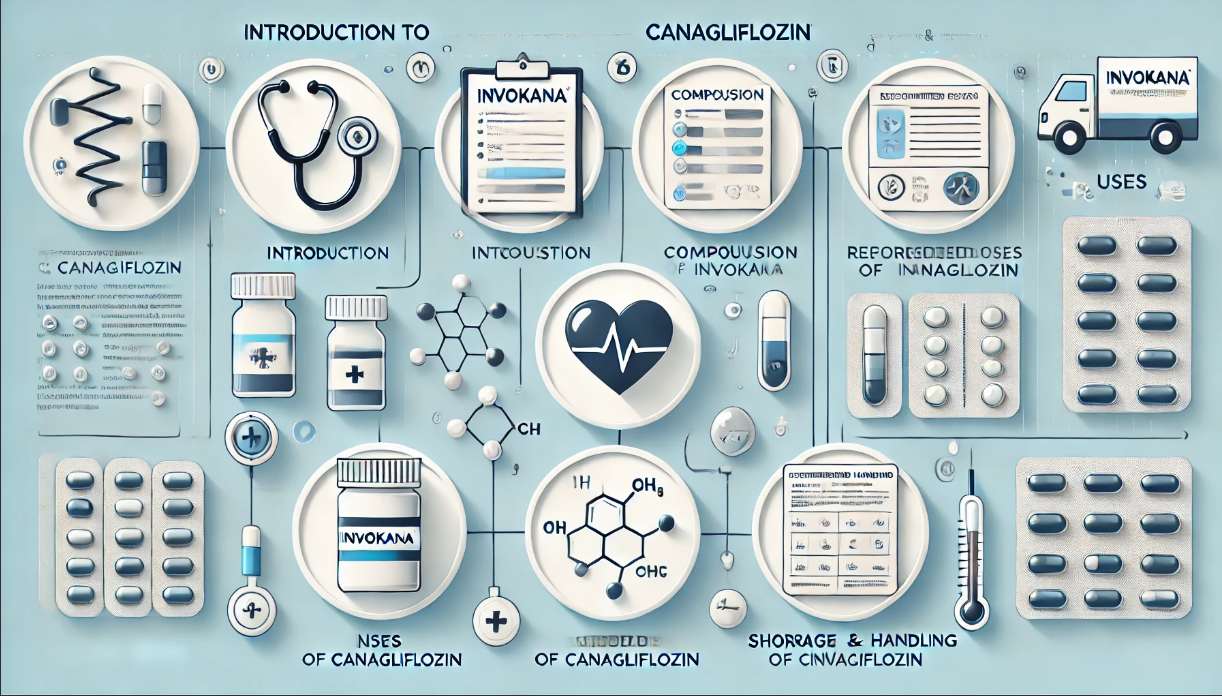
Brief History and Development
The foundation of Canagliflozin lies in targeting the sodium-glucose co-transporter 2 (SGLT2), discovered through research on how the kidneys handle glucose. Recognizing SGLT2 as a treatment focus sparked efforts to create drugs that could effectively lower blood sugar levels without the side effects associated with older diabetes medications. Extensive studies before and during trials proved Canagliflozin's effectiveness and safety. Its development wasn't about science but also about improving the quality of life for patients dealing with chronic illnesses.
Regulatory Approval Status and Market Presence
Canagliflozin's path from the lab to the pharmacy shelves was marked by a series of steps. The FDA first approved it, followed by approvals in the European Union and other regions, showcasing its wide appeal for treating various conditions safely.
- In the United States, it received FDA approval in 2013 for treating type 2 diabetes.
- The European Union later granted EMA approval, making it widely accessible across Europe.
- On a scale Canagliflozin is now available in over 45 countries adapting to different healthcare systems and patient requirements.
This widespread adoption is backed by research and post-market monitoring confirming its positive effects on controlling glucose levels and related metabolic aspects. With diabetes rates increasing, Canagliflozin remains a key player in treatment strategies often recommended alongside lifestyle changes and other medications.
Composition and Formulation
Canagliflozin stands out for its active ingredient, which shares the same name as the medication itself. This component primarily works by blocking the sodium-glucose cotransporter 2 (SGLT2) in the kidneys' proximal tubules, a process in glucose reabsorption from kidney filtrate. This action helps eliminate glucose and improve blood sugar control in adults with type 2 diabetes.
The effectiveness of Canagliflozin doesn't just come from its ingredients; it also contains a well-balanced mix of inactive ingredients that boost the drug's stability, absorption into the body, and overall patient satisfaction. Even though these non-active substances don't have effects, they play a crucial role in how effective the drug is and how patients experience it.
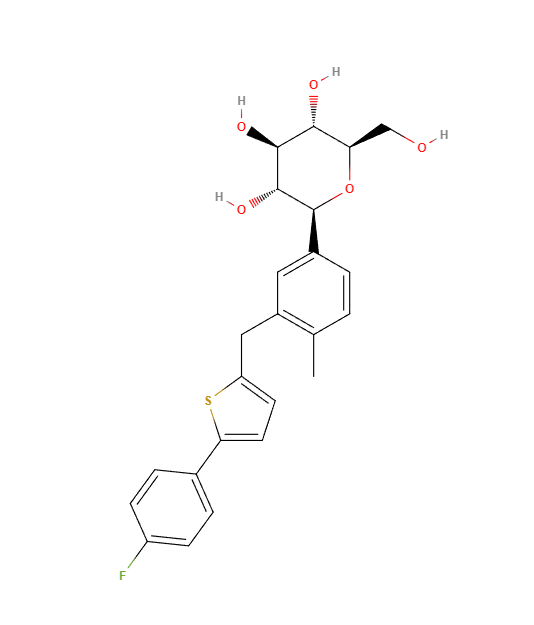
Inactive Components
Canagliflozin is improved by adding various inactive ingredients that help the medication work effectively. These additional ingredients, like microcrystalline cellulose, monohydrate, and magnesium stearate, play important roles in making sure the tablet is just right. They help make the tablet bigger, spread the ingredients evenly, and help it break down easily once you take it.
Available Formulations and Strengths
Canagliflozin comes in forms and strengths to suit a wide range of patient's needs and the level of treatment required:
- 100 mg tablets are commonly prescribed for patients starting Canagliflozin treatment or those with mild to moderate kidney issues.
- 300 mg tablets are recommended for patients who need more intense blood sugar control and can handle the medication well.
These different versions are created to make it easier for patients to take the medication correctly, which helps them stick to their treatment plans and achieve results. With a range of strengths, healthcare providers can customize the treatment based on each patient's specific requirements, leading to improved outcomes when managing type 2 diabetes.
Mechanism of Action
Canagliflozin works differently from traditional diabetes treatments. It targets the sodium-glucose co-transporter 2 (SGLT2) and directly impacts the kidneys, preventing glucose reabsorption and promoting its elimination through urine. This helps reduce blood sugar levels and eases the kidney strain caused by diabetes. Canagliflozin helps regulate blood sugar and protect kidney function, which is often affected by diabetes.
Role in Glucose Regulation and Kidney Function
Canagliflozin's impact goes beyond lowering blood sugar levels; it represents a comprehensive approach to managing metabolism. By blocking the reabsorption of glucose in the kidneys, it naturally helps support the organ's function by decreasing the filtering often seen in diabetic patients. This not only helps maintain stable blood sugar levels but also:
- Eases the burden on the kidneys, possibly slowing down the progression of diabetic kidney disease.
- It promotes calorie loss through excreting glucose, which may lead to some weight loss. This is a side effect for many individuals with type 2 diabetes.
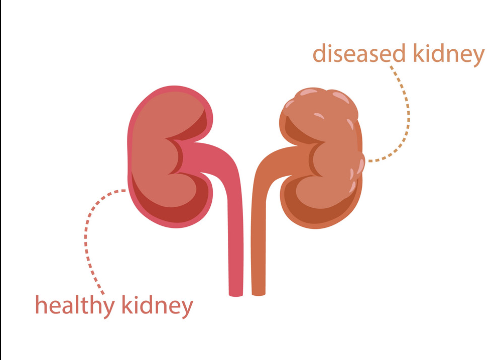
Comparison with Other Diabetes Medications
When compared to medications for diabetes, Canagliflozin stands out due to its unique way of working, which gives it several unique advantages. Unlike sulfonylureas and insulin, which boost insulin levels in the body, Canagliflozin enhances blood sugar control without relying on insulin pathways. This can be particularly beneficial for patients with insulin resistance.
Additionally, compared to DPP 4 inhibitors focusing on meal glucose levels, Canagliflozin provides extra perks such as weight loss and lower blood pressure. These added advantages make it a preferred option in managing type 2 diabetes. These comparative strengths highlight Canagliflozin's role in treating diabetes, offering a holistic therapeutic effect beyond regulating glucose levels.
Uses of Canagliflozin
Canagliflozin is mainly used to treat type 2 diabetes, helping to regulate blood sugar levels. Doctors often recommend this medication to enhance glucose control in adults as a component of a treatment regimen involving dietary adjustments and physical activity.
Effects on Blood Sugar Levels and A1C Reduction
The positive impact of Canagliflozin on lowering blood sugar levels is widely known due to its capability to stop glucose reabsorption in the kidneys. Eliminating glucose through urine decreases plasma glucose levels, leading to a drop in Hemoglobin A1C levels. A1C serves as a measure showing the average blood sugar levels over about three months, and decreasing it is a central goal in managing diabetes.
Benefits in Weight Management and Blood Pressure Control
In addition to its function in controlling blood sugar levels, Canagliflozin offers extra advantages that play a significant role in the overall treatment of type 2 diabetes:
- Weight Management: Canagliflozin helps with weight management by increasing glucose excretion, leading to calorie loss. This can be particularly helpful for individuals with diabetes since excess weight can worsen symptoms and result in other health issues.
- Blood Pressure Regulation: Canagliflozin has been found to slightly impact reducing blood pressure, possibly because of its diuretic-like properties that decrease plasma volume. This benefit is crucial considering the occurrence of hypertension among diabetic patients.
Off-Label Uses
Canagliflozin is mainly used to treat type 2 diabetes. It is also being studied for other potential uses that have not been officially approved yet. Scientific studies are currently researching these additional applications.
Exploring Non-Approved Uses of Canagliflozin
Scientists are currently investigating the possibility of using Canagliflozin to treat conditions that share their root causes with diabetes, such as polycystic ovary syndrome (PCOS) and non-alcoholic fatty liver disease (NAFLD). The decision to explore these applications is grounded in Canagliflozin's proven effectiveness in lowering insulin resistance, a shared factor among these health issues.
Research Studies and Findings on Off-Label Benefits
Recent research has shown promising outcomes in the use of Canagliflozin:
- A clinical trial revealed that Canagliflozin significantly enhanced insulin sensitivity and decreased hyperinsulinemia in individuals with PCOS, indicating a possible therapeutic application beyond diabetes.
- Another study emphasized Canagliflozins impact on reducing liver content in patients with NAFLD presenting a potential new approach, to addressing this common issue among diabetic populations.
These initial findings highlight canagliflozins potential to go beyond its therapeutic boundaries, opening up possibilities for novel treatments that leverage its metabolic advantages.
Dosage and Administration
Canagliflozin, also known as Invokana, is carefully adjusted to suit the therapeutic requirements of different groups of patients. This personalized approach guarantees that the drug works effectively and safely, improving its usefulness in treating type 2 diabetes.
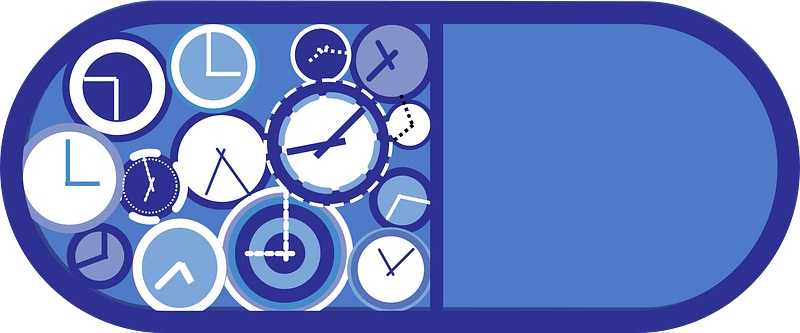
Recommended Dosages for Different Patient Groups
The usual starting dose for Canagliflozin is typically 100 mg a day, to be taken before the day's first meal. Depending on how it works and how well it's tolerated, this dosage can be changed to 300 mg daily for patients needing more help with their blood sugar levels. Some groups of patients might need different doses:
- Patients with moderate kidney problems should not take more than 100 mg daily.
- Older patients or those at risk of losing too much fluid might need changes in their dose or more careful monitoring to reduce the chances of side effects.
Instructions for Use
Patients should take Canagliflozin by mouth, with or without food. To ensure the medication's effectiveness, it's important to swallow the tablets rather than break or chew them. Following the prescribed dosages is crucial for patients unless advised differently by their healthcare provider.
Timing and Frequency of Administration
Canagliflozin works best when taken regularly in the morning following the body's cycle to ensure effective results and stable blood sugar levels all day.
How Long Does Invokana Stay in the Body System
Canagliflozin's half-life is around 10.6 to 13.1 hours, indicating that it takes this amount of time for the drug's concentration in the bloodstream to decrease by half. Nonetheless, its impact on blood sugar levels and presence can endure for up to 24 hours, which explains why it is typically taken once a day. The complete removal of the drug from the body may take a few days, varying based on factors like kidney function.

Invokana Patient Assistance
To ensure that Canagliflozin remains accessible, programs are in place to assist patients in easing the financial strain for those who meet the requirements. These programs commonly provide:
- Discounted prices or aid with copayments for qualifying patients.
- Assistance with navigating insurance coverage and reimbursement choices.
- Materials to support patients in understanding and managing their condition with Canagliflozin.
Patients are advised to contact their healthcare provider or directly contact the drug manufacturer for details on available assistance programs and eligibility criteria.
Side Effects of Canagliflozin
Although Canagliflozin is effective for treating type 2 diabetes, it can lead to side effects that vary in severity, requiring careful supervision and treatment.

Common Side Effects
Common side effects of Canagliflozin that are often mentioned are:
- Tract infections: Canagliflozin works by eliminating glucose through urine, which may encourage the growth of bacteria in the urinary tract.
- Dehydration: Excessive urination can result in fluid loss, posing a risk of dehydration, particularly in older individuals or those with existing kidney problems.
Serious Side Effects
Frequent but more serious adverse reactions necessitating urgent medical attention include:
- Ketoacidosis: A critical condition characterized by the body generating elevated levels of blood acids called ketones, even in cases where blood sugar levels are not significantly elevated.
- Renal complications: Prolonged usage may impact kidney functionality, requiring ongoing kidney health monitoring throughout the treatment period.
Statistics and Frequency of Side Effects
Based on the analysis, mild side effects such as urinary tract infections are standard, affecting around 5% to 10% of individuals using the medication. On the other hand, severe side effects like ketoacidosis and notable kidney damage are less common, typically occurring in fewer than 1% of patients. These instances highlight the importance of choosing candidates for Canagliflozin treatment and closely monitoring their progress while using it.
Invokana and Weight Loss
One of the outcomes of Canagliflozin is weight reduction, which happens due to the loss of calories through the excretion of glucose in urine. Although this is not a purpose for using the medication, it is a positive side effect for numerous individuals with type 2 diabetes who might also be facing challenges with being overweight. Keeping track of weight loss in this situation is essential to ensure it stays within boundaries and doesn't impact nutritional intake or general well-being.

Canagliflozin Drug Class
Invokana also called Canagliflozin is a known medication belonging to the group of drugs called Sodium-Glucose Cotransporter 2 (SGLT2) inhibitors. These medications help lower blood sugar levels by inhibiting glucose reabsorption in the kidneys and facilitating its removal via urine.
Canagliflozin Classification
Canagliflozin, in its category, is uniquely crafted to focus on the SGLT2 protein, proving to be a choice for enhancing blood sugar control in individuals with type 2 diabetes. This precise targeting brings advantages such as better heart health and kidney protection, which are crucial for the ongoing care of diabetes.
Canagliflozin Alternatives
Canagliflozin is a treatment option, but there are other choices in the SGLT2 inhibitor category, such as:
Each option has its characteristics and could be selected depending on the patient's needs or health conditions.
Comparison of Canagliflozin with Other SGLT2 Inhibitors
When we look at Canagliflozin compared to medications in its category, some notable distinctions come to light:
- Canagliflozin vs Empagliflozin: Both drugs effectively lower A1C levels, but Empagliflozin has shown slightly better outcomes in reducing cardiovascular events among diabetic patients.
- Canagliflozin vs Dapagliflozin: While Dapagliflozin provides similar blood sugar management, it is recognized for its advantages in treating heart failure patients, potentially making it a preferred choice over Canagliflozin in such patient populations.
- Canagliflozin vs Metformin: Although Metformin is typically the initial treatment for type 2 diabetes due to its effectiveness and safety record, Canagliflozin offers an alternative for patients needing additional glucose control or those unable to tolerate Metformin.
Comparing Invokana with Other Brands
Comparing Invokana with brand names provides valuable insights for tailoring treatment options based on individual patient needs:
- When compared to Invokana and Jardiance, both medications are effective for managing diabetes, but Jardiance is often recognized for its superior cardiovascular advantages.
- In contrast, when comparing Invokana to Farxiga, it may be more suitable for patients with a history of heart failure or those requiring effects on heart and kidney health.
Although Canagliflozin and its alternatives share a purpose, their decision should be personalized according to the individual's unique health profile and medical background.
Important Precautions
Administering Canagliflozin necessitates following precautionary steps to guarantee patient well-being and optimize the medication's healing advantages. This includes supervision and consideration of specific circumstances.
Monitoring Kidney Function and Blood Sugar Levels
Due to how Canagliflozin works in the kidneys, regularly checking kidney function is essential. This monitoring is crucial for detecting any decrease in kidney function, which can help prevent kidney damage. It's also important to monitor blood sugar levels to prevent low blood sugar, especially when Canagliflozin is taken along with other diabetes medications.
When to Avoid Using Canagliflozin
Patients with kidney problems or undergoing dialysis should steer clear of Canagliflozin since it depends on kidney function for effectiveness and elimination. Moreover, individuals with an occurrence of diabetic ketoacidosis are advised against using Canagliflozin due to the heightened risk associated with this condition.
Precautions for Surgery and Other Medical Procedures
Before going into surgery or any other invasive invasive medical procedures, it is essential to talk to your healthcare providers about using Canagliflozin. Your healthcare provider may suggest temporarily stopping the medication to help prevent imbalances and ensure the best surgical results.
Interactions with Other Medications
Understanding how Canagliflozin interacts with medications is crucial for effectively managing diabetes, as it can impact the drugs' effectiveness and safety.
Common Drug Interactions and Their Implications
Diuretics, insulin, and other medications that lower blood sugar levels are particularly important because they impact both blood sugar levels and fluid balance. Managing these interactions carefully is crucial to prevent complications like dehydration or low blood sugar levels.
How Canagliflozin Interacts with Insulin and Diuretics
Canagliflozin could boost the blood sugar-lowering impact of insulin, requiring changes in insulin dosage to prevent the possibility of blood sugar spikes. Likewise, when taken alongside diuretics, Canagliflozin has the potential to amplify the effect, possibly resulting in dehydration and reduced blood pressure.
Guidelines for Co-administration with Other Diabetes Drugs
When co-administered with other diabetes medications, particularly those that lower blood glucose, it is crucial to adjust dosages accordingly and monitor blood glucose levels to maintain within the target range and prevent hypoglycemia.
Contraindications
Medical conditions and reasons make it unsuitable to use Canagliflozin mostly because it can lead to more side effects or lower effectiveness in those situations.

Conditions and Factors That Prohibit the Use of Canagliflozin
Canagliflozin should not be used in patients with kidney problems, those undergoing dialysis, or people allergic to the medication or its ingredients. It is also not recommended for individuals with an experience of severe diabetic ketoacidosis.

Risk Factors Including Renal Impairment and Hypersensitivity
Patients with moderate to kidney problems face a higher risk when taking Canagliflozin as it relies on kidney function for effectiveness and removal. While hypersensitivity reactions are uncommon, they can be severe. Require stopping the medication immediately.
Administration Considerations
The use of Canagliflozin in patients necessitates adjustments to cater to different groups of patients. These considerations guarantee that each group of patients receives a treatment plan that maximizes effectiveness while reducing potential risks.
Elderly Patients
Elderly individuals frequently show a tendency towards age-related decline in kidney function, making it essential to use Canagliflozin cautiously. It is crucial to adjust the dosage and closely monitor kidney health in this group to avoid adverse effects on the kidneys and ensure that the treatment remains effective:
- Adjusting the dosage based on kidney function rather than age might be necessary.
- It is advised to conduct tests to monitor renal function changes that could warrant additional dosage adjustments.

Pregnant Women and Nursing Mothers
The safety of Canagliflozin in pregnancy and breastfeeding is still being studied. Since there is research on its safety in these situations it is usually advised not to use Canagliflozin if you are pregnant or nursing:
- It's better to consider other medications with proven safety records.
- If using Canagliflozin becomes necessary, make sure to do so under close monitoring by a healthcare professional.

Children
In patients, the evaluation of Canagliflozin is closely scrutinized due to children's differing metabolic and developmental traits compared to adults. While there is research on its safety and effectiveness in this population, certain factors should be taken into account:
- It is not advisable to administer Canagliflozin to children below 18 years old as its impact and safety in this age group are not well established.
- If its use becomes necessary, it is crucial to monitor and adjust the dosage carefully based on the child's age and stage of development.

Overdose and Management
Dealing with an overdose of Canagliflozin necessitates steps to lessen its impact and avert lasting health issues. Familiarity with the signs and suitable methods for handling them is vital for healthcare professionals and individuals.
Symptoms of Canagliflozin Overdose
Signs of taking too much Canagliflozin can lead to various symptoms such as:
- Frequent urination and extreme thirst
- Noticeable drop in blood pressure
- Imbalances in electrolytes and feelings of lightheadedness
Immediate Actions and Antidotes
In case of an overdose, it is crucial to seek medical help. Steps involve:
- Providing fluids to address dehydration
- Keeping an eye on blood pressure and electrolyte levels
- Getting medical assistance at a hospital for intravenous fluid administration and continuous monitoring of vital signs
There are no specific antidotes, for Canagliflozin; therefore treatment focuses on providing supportive and symptomatic care.
Long-term Health Implications
Extended exposure to levels of Canagliflozin may result in significant health concerns, like severe kidney problems or heart issues caused by prolonged low blood pressure. It is advised to undergo medical assessments and monitoring to manage these potential risks.
Invokana Withdrawal Symptoms
When treatment stops suddenly, specific individuals may encounter withdrawal effects like changes in blood sugar levels and a resurgence of signs. Reducing the dosage with medical oversight is recommended to lessen these impacts.

Storage and Handling Precautions
Proper storage and handling of Canagliflozin are crucial to maintaining its effectiveness and prolonging its shelf life. Patients and healthcare professionals should follow the prescribed guidelines to guarantee the medication's safety and efficacy.
Recommended Storage Conditions
Store Canagliflozin at room temperature, away from light and moisture, to maintain its quality. Please keep it in the packaging until you're ready to use it to shield it from environmental factors and contamination.

Shelf Life and Disposal Methods
Canagliflozin usually remains effective for two years after it is made. Proper disposal of any unused medication is important to prevent misuse or harm to the environment. Patients should consider using take-back programs or talking to their pharmacist for guidance on disposal methods.
Handling Precautions for Healthcare Providers and Patients
Healthcare professionals and patients using Canagliflozin should be mindful of the possibility of drug dust irritation. It is advisable to handle the tablets with care and wash hands before and after administering the medication to avoid accidental ingestion of drug remnants.

